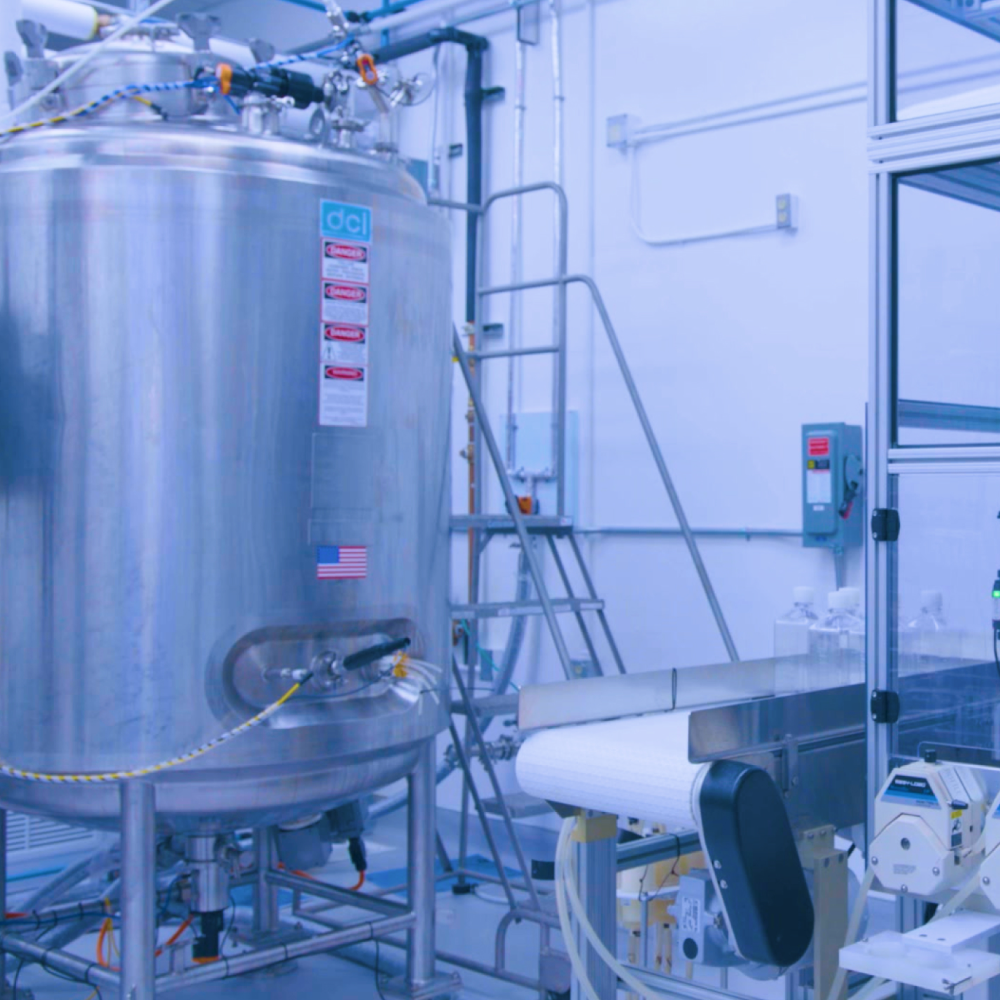NOW AVAILABLE
AAV•Tek AAV Stabilizer
The AAV•Tek AAV Stabilizer offers a multi-purpose solution that can help you achieve substantial recovery improvements and safeguard your product. It minimizes aggregation effects on surfaces, reduces turbidity and pressure during filtration, and promotes monodispersion during chromatography. It also reduces the potential for shear pressure-induced loss of structural integrity (e.g., unfolding, rupturing, precipitation, etc.) and can improve recovery by reducing unwanted binding interactions of your product with surfaces.
This 100x concentrated solution is available in 500 mL and 100 mL formats that can be directly spiked into your feedstock, buffers, and solutions to enhance capsid integrity.
Ensure your
AAV capsid integrity
Save time and resources with this solution-based safety factor that can be easily used as a spiked additive to downstream bioprocess buffers and solutions.
Turbidity reduction was measured by comparing the turbidity of the filtrates from different filter trains that were challenged with different AAV serotypes treated with and without the AAV Stabilizer during the filtration of harvest lysate. Serotypes AAV6 and AAV9 showed the highest turbidity reductions during clarification.

Pressure reduction was measured by comparing the average pressure of filters being challenged with different AAV serotypes treated with and without the AAV Stabilizer during the filtration of harvest lysate. Serotypes AAV2 and AAV8 showed the highest average pressure reductions during clarification.

The components in the AAV Stabilizer facilitate AAV monodispersion by preventing non-specific binding to surfaces and minimizing interfacial forces. It can both prevent and reverse the aggregation of your AAV particles.

Figure 3: Dynamic Light Scattering (DLS) overlay of AAV2 containing affinity eluate (-AAV Stabilizer; orange) and AAV2 containing affinity eluate (+AAV Stabilizer; blue). Affinity eluate produced without the AAV Stabilizer showed 38% aggregation. Affinity eluate produced with the AAV Stabilizer showed no aggregation.

Figure 4: Aggregation reduction was measured by comparing the aggregation levels by DLS of affinity to filtrates of the eluates from different AAV serotypes treated with and without the AAV Stabilizer. Serotypes AAV2 and AAV8 showed the highest reduction of aggregation.
Increased recovery was observed during and after the affinity chromatography step in the presence of the AAV Stabilizer. This is shown below using DLS data across multiple tested serotypes.

Figure 5:
Left: Dynamic Light Scattering (DLS) overlay of AAV2 containing affinity eluate that was not treated with the AAV Stabilizer, showing a significant loss occurring during filtration (orange).
Right: Dynamic Light Scattering (DLS) overlay of AAV2 containing affinity eluate that was treated with the AAV Stabilizer, showing no loss of AAV particles during filtration.

Figure 6: Affinity recovery improvement was measured by comparing the recovery of different AAV serotypes treated with and without the AAV Stabilizer during affinity chromatography. Serotypes AAV6 and AAV9 showed the highest average recovery increases.
Infectivity improvement was measured by comparing the infectivity recovery of transduction units from lysate to affinity eluate filtrate from processes using different AAV serotypes treated with and without the AAV Stabilizer. Serotypes AAV8 and AAV9 showed the highest infectivity improvements.


The AAV•Tek AAV Stabilizer has a proprietary formulation that contains poloxamer and sucrose. Please get in touch if you'd like more information or have any questions.
Spiking the AAV Stabilizer into the lysate load, filtration buffers, affinity chromatography buffers, and affinity product filtration buffers is a great way to protect the integrity of your AAV capsid.
We have shown that the AAV Stabilizer increases recovery and concomitantly infectivity of AAV capsids.
The AAV Stabilizer is provided as a 100x concentrate. For example, 10 mL of AAV Stabilizer should be added to a 1000 mL volume.
We have not encountered any matrix effects of AAV Stabilizer ingredients on standard AAV assays.
Find out what’s possible
Talk to our consultants today to discover custom solutions that can help you achieve your goals.
















